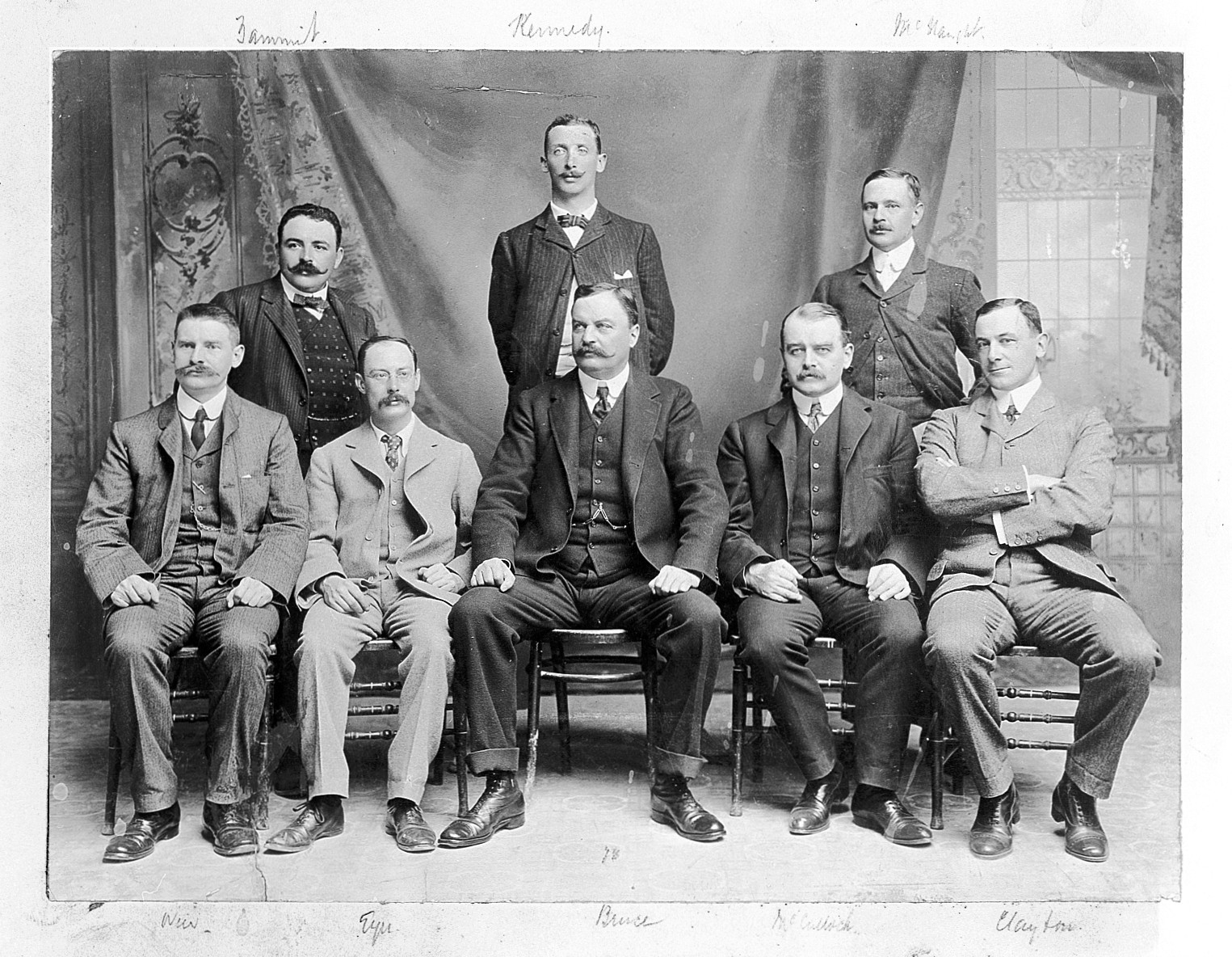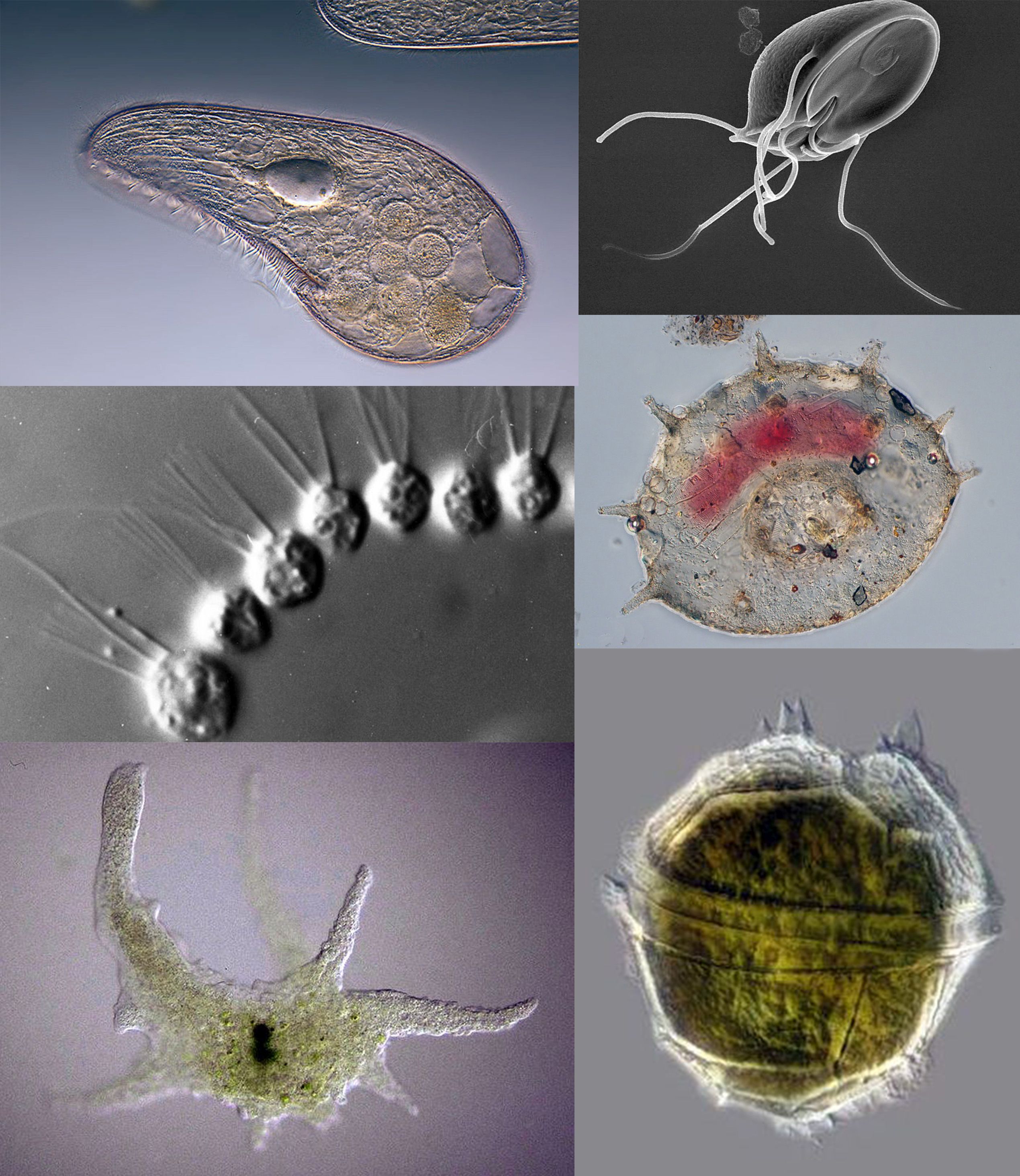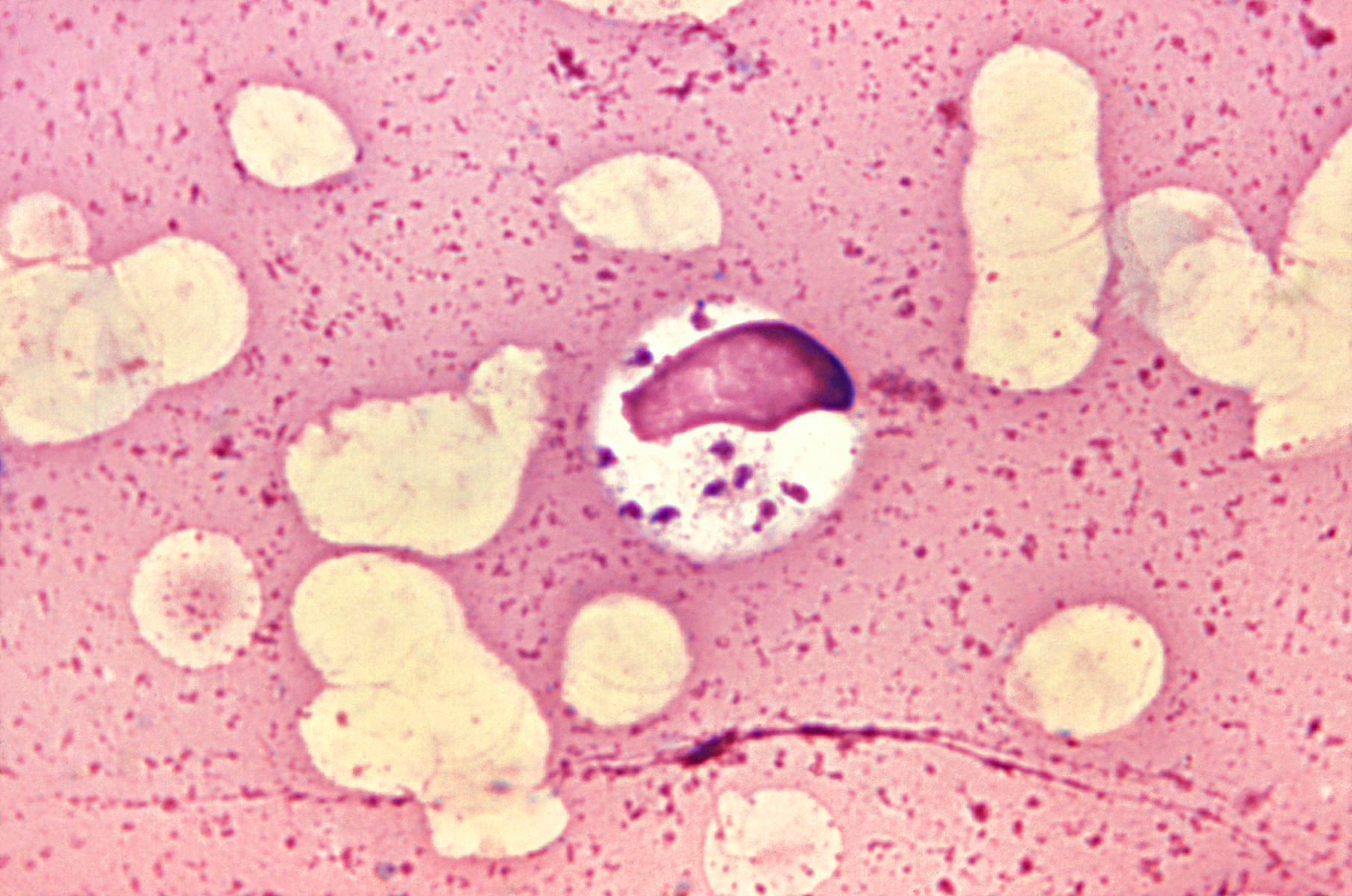|
Trypanosoma Simiae
''Trypansoma simiae'' is a protozoan parasite belonging to the genus '' Trypansoma'' and the family '' Trypansomatidae''. It is usually found in domesticated animals; i.e pigs, and frequently found in Sub-Saharan Africa. It is also sometimes found in camels and rhinos. It was once described as "the lightning destroyer of the domestic pig" as it caused a swift death in them after infection.This parasite is transmitted through the ingestion of flies. ''Trypansoma'' encompasses various different species including ''T. simaie''. It is of particular interest as it is zoonotic and has a high impact on livestock and different farm animals. Description Morphology and structure They are large, monomorphic, and uniform in shape. It is usually free of granules in its cytoplasm. It also has an elongated undulating body which aids in its motility. The undulating body along with the flagellum allows it to travel along through the bloodstream of its hosts. Histology Usually presented in the ... [...More Info...] [...Related Items...] OR: [Wikipedia] [Google] [Baidu] |
David Bruce (microbiologist)
Major-General Sir David Bruce, (29 May 1855 – 27 November 1931) was a Scottish pathologist and microbiologist who made some of the key contributions in tropical medicine. In 1887, he discovered a bacterium, now called ''Brucella'', that caused what was known as Malta fever. In 1894, he discovered a protozoan parasite, named ''Trypanosoma brucei'', as the causative pathogen of nagana (animal trypanosomiasis). Working in the Army Medical Services and the Royal Army Medical Corps, Bruce's major scientific collaborator was his microbiologist wife Mary Elizabeth Bruce (''née'' Steele), with whom he published around thirty technical papers out of his 172 papers. In 1886, he was chairman of the Malta Fever Commission that investigated the deadly disease, by which he identified a specific bacterium as the cause. Later, with his wife, he investigated an outbreak of animal disease called nagana in Zululand and discovered the protozoan parasite responsible for it. He led the second a ... [...More Info...] [...Related Items...] OR: [Wikipedia] [Google] [Baidu] |
Protozoa
Protozoa (: protozoan or protozoon; alternative plural: protozoans) are a polyphyletic group of single-celled eukaryotes, either free-living or parasitic, that feed on organic matter such as other microorganisms or organic debris. Historically, protozoans were regarded as "one-celled animals". When first introduced by Georg Goldfuss, in 1818, the taxon Protozoa was erected as a class within the Animalia, with the word 'protozoa' meaning "first animals", because they often possess animal-like behaviours, such as motility and predation, and lack a cell wall, as found in plants and many algae. This classification remained widespread in the 19th and early 20th century, and even became elevated to a variety of higher ranks, including phylum, subkingdom, kingdom, and then sometimes included within the paraphyletic Protoctista or Protista. By the 1970s, it became usual to require that all taxa be monophyletic (derived from a common ancestor that would also be regarded as protozo ... [...More Info...] [...Related Items...] OR: [Wikipedia] [Google] [Baidu] |
Trypanosoma
''Trypanosoma'' is a genus of kinetoplastids (class Trypanosomatidae), a monophyletic group of unicellular parasitic flagellate protozoa. Trypanosoma is part of the phylum Euglenozoa. The name is derived from the Ancient Greek ''trypano-'' (borer) and ''soma'' (body) because of their corkscrew-like motion. Most trypanosomes are heteroxenous (requiring more than one obligatory host to complete life cycle) and most are transmitted via a vector. The majority of species are transmitted by blood-feeding invertebrates, but there are different mechanisms among the varying species. '' Trypanosoma equiperdum'' is spread between horses and other equine species by sexual contact. They are generally found in the intestine of their invertebrate host, but normally occupy the bloodstream or an intracellular environment in the vertebrate host. Trypanosomes infect a variety of hosts and cause various diseases, including the fatal human diseases sleeping sickness, caused by '' Trypanosoma br ... [...More Info...] [...Related Items...] OR: [Wikipedia] [Google] [Baidu] |
Trypanosomatida
Trypanosomatida is a group of kinetoplastid unicellular organisms distinguished by having only a single flagellum. The name is derived from the Greek ''trypano'' (borer) and ''soma'' (body) because of the corkscrew-like motion of some trypanosomatid species. All members are exclusively parasitic, found primarily in insects. A few genera have life-cycles involving a secondary host, which may be a vertebrate, invertebrate or plant. These include several species that cause major diseases in humans. Some trypanosomatida are intracellular parasites, with the important exception of ''Trypanosoma brucei''. Medical importance The three major human diseases caused by trypanosomatids are; African trypanosomiasis (African trypanosomiasis, sleeping sickness, caused by ''Trypanosoma brucei'' and transmitted by Tsetse fly, tsetse flies), South American trypanosomiasis (Chagas disease, caused by ''Trypanosoma cruzi, T. cruzi'' and transmitted by Triatominae, triatomine bugs), and leishmanias ... [...More Info...] [...Related Items...] OR: [Wikipedia] [Google] [Baidu] |
University Of Nairobi
The University of Nairobi (uonbi or UoN; ) is a college, collegiate research university based in Nairobi and is the largest List of universities and colleges in Kenya, university in Kenya. Although its history as an educational institution dates back to 1956, it did not become an independent university until 1970. During that year, the University of East Africa was split into three independent universities: the Makerere University in Uganda, the University of Dar es Salaam in Tanzania, and the University of Nairobi in Kenya. During the 2023 academic year, the university had 49,047 students, of whom 35,897 were undergraduates and 11,003 were postgraduates. The university launched several policy frameworks and introduced self-funded enrollment (also called 'module 2') to cope with the rising demand for higher education in Kenya. Establishment The inception of the University of Nairobi dates back to 1956, with the establishment of the Royal Technical College, which admitted its f ... [...More Info...] [...Related Items...] OR: [Wikipedia] [Google] [Baidu] |
Sub-Saharan Africa
Sub-Saharan Africa is the area and regions of the continent of Africa that lie south of the Sahara. These include Central Africa, East Africa, Southern Africa, and West Africa. Geopolitically, in addition to the list of sovereign states and dependent territories in Africa, African countries and territories that are situated fully in that specified region, the term may also include polities that only have part of their territory located in that region, per the definition of the United Nations geoscheme for Africa, United Nations (UN). This is considered a non-standardised geographical region with the number of countries included varying from 46 to 48 depending on the organisation describing the region (e.g. United Nations, UN, World Health Organization, WHO, World Bank, etc.). The Regions of the African Union, African Union (AU) uses a different regional breakdown, recognising all 55 member states on the continent—grouping them into five distinct and standard regions. The te ... [...More Info...] [...Related Items...] OR: [Wikipedia] [Google] [Baidu] |
Zoonotic
A zoonosis (; plural zoonoses) or zoonotic disease is an infectious disease of humans caused by a pathogen (an infectious agent, such as a virus, bacterium, parasite, fungi, or prion) that can jump from a non-human vertebrate to a human. When humans infect non-humans, it is called reverse zoonosis or anthroponosis. Major modern diseases such as Ebola and salmonellosis are zoonoses. HIV was a zoonotic disease transmitted to humans in the early part of the 20th century, though it has now evolved into a separate human-only disease. Human infection with animal influenza viruses is rare, as they do not transmit easily to or among humans. However, avian and swine influenza viruses in particular possess high zoonotic potential, and these occasionally recombine with human strains of the flu and can cause pandemics such as the 2009 swine flu. Zoonoses can be caused by a range of disease pathogens such as emergent viruses, bacteria, fungi and parasites; of 1,415 pathogens known to i ... [...More Info...] [...Related Items...] OR: [Wikipedia] [Google] [Baidu] |
Zoonosis
A zoonosis (; plural zoonoses) or zoonotic disease is an infectious disease of humans caused by a pathogen (an infectious agent, such as a virus, bacterium, parasite, fungi, or prion) that can jump from a non-human vertebrate to a human. When humans infect non-humans, it is called reverse zoonosis or anthroponosis. Major modern diseases such as Ebola and salmonellosis are zoonoses. HIV was a zoonotic disease transmitted to humans in the early part of the 20th century, though it has now evolved into a separate human-only disease. Human infection with animal influenza viruses is rare, as they do not transmit easily to or among humans. However, avian and swine influenza viruses in particular possess high zoonotic potential, and these occasionally recombine with human strains of the flu and can cause pandemics such as the 2009 swine flu. Zoonoses can be caused by a range of disease pathogens such as emergent viruses, bacteria, fungi and parasites; of 1,415 pathogens known t ... [...More Info...] [...Related Items...] OR: [Wikipedia] [Google] [Baidu] |
Doi (identifier)
A digital object identifier (DOI) is a persistent identifier or handle used to uniquely identify various objects, standardized by the International Organization for Standardization (ISO). DOIs are an implementation of the Handle System; they also fit within the URI system (Uniform Resource Identifier). They are widely used to identify academic, professional, and government information, such as journal articles, research reports, data sets, and official publications. A DOI aims to resolve to its target, the information object to which the DOI refers. This is achieved by binding the DOI to metadata about the object, such as a URL where the object is located. Thus, by being actionable and interoperable, a DOI differs from ISBNs or ISRCs which are identifiers only. The DOI system uses the indecs Content Model to represent metadata. The DOI for a document remains fixed over the lifetime of the document, whereas its location and other metadata may change. Referring to an onl ... [...More Info...] [...Related Items...] OR: [Wikipedia] [Google] [Baidu] |
ISSN (identifier)
An International Standard Serial Number (ISSN) is an eight-digit to uniquely identify a periodical publication (periodical), such as a magazine. The ISSN is especially helpful in distinguishing between serials with the same title. ISSNs are used in ordering, cataloging, interlibrary loans, and other practices in connection with serial literature. The ISSN system was first drafted as an International Organization for Standardization (ISO) international standard in 1971 and published as ISO 3297 in 1975. ISO subcommittee TC 46/SC 9 is responsible for maintaining the standard. When a serial with the same content is published in more than one media type, a different ISSN is assigned to each media type. For example, many serials are published both in print and electronic media. The ISSN system refers to these types as print ISSN (p-ISSN) and electronic ISSN (e-ISSN). Consequently, as defined in ISO 3297:2007, every serial in the ISSN system is also assigned a linking ISSN ... [...More Info...] [...Related Items...] OR: [Wikipedia] [Google] [Baidu] |
PMC (identifier)
PubMed Central (PMC) is a free digital repository that archives open access full-text scholarly articles that have been published in biomedical and life sciences journals. As one of the major research databases developed by the National Center for Biotechnology Information (NCBI), PubMed Central is more than a document repository. Submissions to PMC are indexed and formatted for enhanced metadata, medical ontology, and unique identifiers which enrich the XML structured data for each article. Content within PMC can be linked to other NCBI databases and accessed via Entrez search and retrieval systems, further enhancing the public's ability to discover, read and build upon its biomedical knowledge. PubMed Central is distinct from PubMed. PubMed Central is a free digital archive of full articles, accessible to anyone from anywhere via a web browser (with varying provisions for reuse). Conversely, although PubMed is a searchable database of biomedical citations and abstracts, the f ... [...More Info...] [...Related Items...] OR: [Wikipedia] [Google] [Baidu] |
PMID (identifier)
PubMed is an openly accessible, free database which includes primarily the MEDLINE database of references and abstracts on life sciences and biomedical topics. The United States National Library of Medicine (NLM) at the National Institutes of Health maintains the database as part of the Entrez system of information retrieval. From 1971 to 1997, online access to the MEDLINE database was provided via computer and phone lines primarily through institutional facilities, such as university libraries. PubMed, first released in January 1996, ushered in the era of private, free, home- and office-based MEDLINE searching. The PubMed system was offered free to the public starting in June 1997. Content In addition to MEDLINE, PubMed provides access to: * older references from the print version of ''Index Medicus'', back to 1951 and earlier * references to some journals before they were indexed in Index Medicus and MEDLINE, for instance ''Science'', '' BMJ'', and ''Annals of Surgery ... [...More Info...] [...Related Items...] OR: [Wikipedia] [Google] [Baidu] |





